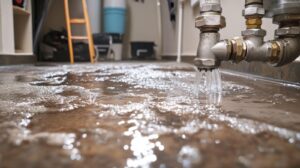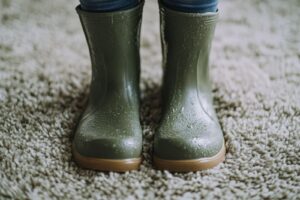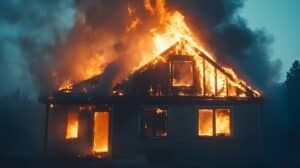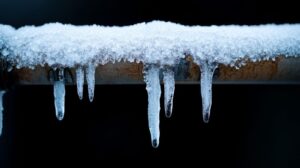Mold relies on excess moisture to grow, and water leaks often lead to unwanted mold growth in your home. No matter the water source or the type of leak, the best way to prevent mold from growing is to stop the leak and dry the area as quickly as possible.
Unfortunately, water leaks can often go undetected for a while and cause water damage before they are discovered — this is especially true if the leak happens underneath a layer of construction materials such as drywall or flooring.
The longer the water leaks, the more likely water damage will occur, and mold will begin to grow, causing both structural problems for your house and health problems for those living there. In fact, mold can start to grow within 48 hrs of a leak, so finding and fixing a leak as soon as possible is essential to preventing water damage and mold.
Here are a few specific circumstances to be aware of when it comes to water leaks and mold.
Flooding
Water damage can begin within minutes of a flood and with just an inch of water. Obviously, the more water that gets into your home, the worse the damage. The same goes for the length of time the flood water is in your home.
Some preventive measures, such as sandbags, can be taken when a flood occurs after a storm. However, severe storm floods usually result in property damage. If possible, any submerged area should be thoroughly dried and disinfected within 24-48 hours.
You should be especially thorough in drying if the flood water contains sewage. All areas that have been in contact with black water — water containing human waste — should be considered contaminated and treated with additional precautions.
Carpets, walls, and ceilings may require extra effort and specialized equipment to dry completely. Even if the top layer seems dry, it is important to ensure that all sub-layers are dry. For example, this means lifting the carpet and drying the padding underneath or removing the ceiling panels until they are completely dry.
Suppose you cannot completely dry the flooded area within 48 hours. In that case, there is a good chance that structural damage has occurred, and an expert must professionally restore the area to ensure structural integrity and appropriate decontamination.
Smaller Leaks
A variety of different circumstances can cause leaks. Damaged roofs, unsealed windows, changes in water pressure or faulty plumbing fixtures are all examples of water leaks that can cause water damage.
The biggest problem with leaks is that they often go unnoticed until after damage begins. Small leaks are often more destructive than obvious ones simply because water can creep in undetected for longer periods.
Some signs that your home may be leaking are increased water bills without a change in water usage, bubbling walls or ceilings, changes in water pressure, or changes in the color of the water from the pipes.
Mold and mildew are also examples of water damage that can often reveal a leak that goes unnoticed. If any area of your home develops a strong musky smell, it is likely that mold has begun to grow because of the excess moisture in your home.
You can reverse most water damage if the leak is detected and repaired within a few hours. But even small, slow leaks can start damaging your home in minutes. The biggest reason for this is that many leaks occur in the hidden layers of your home building or in areas where more than one construction layer is affected.
For example, a toilet leak can run down the toilet’s base and soak into the materials of the floor and below. If the leak is slow and small, you may not find the damage until a lot of space has been soaked — this includes baseboards and floorboards or ceiling drywall below.
Humidity
Water vapor in the air can also damage your home if there is too much moisture present for mold to thrive. Humidity is measured as the percentage of water vapor in the air. To prevent water damage, especially mold, the moisture in your home should not exceed 50 percent.
It can be challenging if you live in a humid climate. However, there are some great devices that can help maintain good humidity, such as dehumidifiers or air conditioners.
If the humidity rises for a long time, mold can develop even in your HVAC system and spread throughout the rest of your house. If you suspect mold has contaminated your heating, air conditioning, or any part of your ventilation system, be sure to contact professional restoration specialists to address the issue before running the system.
High humidity can damage furniture, especially wooden pieces. It can also damage your paint and drywall if exposed to too much moisture for a long time.
Absorbent Materials
Some materials in your house are more susceptible to mold and water damage than others. If water leaks onto things like carpet, ceiling tiles, linoleum flooring, or some softer tiles without being resolved quickly, there is a good chance that you will need to replace them with new materials rather than restore the original materials.
While this may mean spending unplanned time and money on home improvement, it is much better to take care of the root of the problem and accompanying damage appropriately rather than risk the health and well-being of the people under your roof.
Black Diamond Water Damage & Restoration
Whether you discover the water leak quickly or after extensive water damage has already occurred, be sure to call the experts at Black Diamond Water Damage & Restoration. Not only do we clean up and restore your mold-damaged areas, we determine the cause and make sure to prevent further mold growth.
If you or someone you know needs professional help to deal with water damage in a home or office, contact us today!
toto slot






